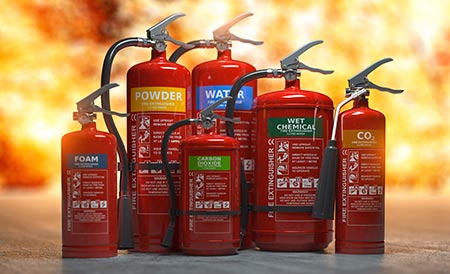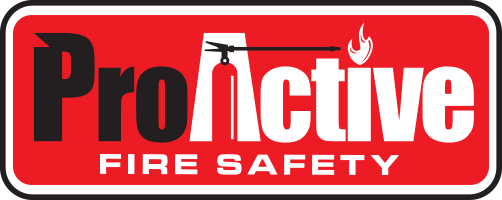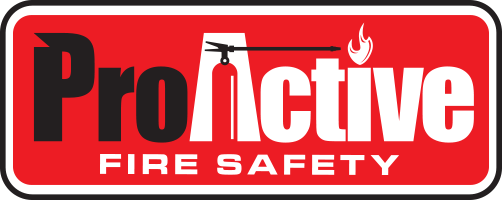
Fire Extinguishers
A fire extinguisher is the first line of defense to keep commercial buildings and occupants safe in the event of a fire. Sometimes having a fire extinguisher isn’t enough. Fire extinguishers often go untouched for months at a time. That doesn’t mean they don’t encounter situations that can cause bumps, dents, leaks, or rust.
If your fire extinguisher exhibits any of these defects, it may be damaged and or inoperable! Call us for your fire extinguisher maintenance, and Inspections. We can assess the situation and offer a repair, New replacement or service depending on the extremity of the situation.
Call ProActive Fire Safety: 863-999-3279
At Proactive Fire Safety,
we provide leading fire extinguisher services including:
Fire extinguisher sales
- Fire extinguisher inspection & services including 6-Year and Hydrostatic Maintenance
- Fire extinguisher recharge
- Fire extinguisher replacement and Installations
Fire Extinguisher maintenance and inspections include:
- Annual Inspections – The NFPA (National Fire Protection Association) 10 and your local jurisdiction require inspections, as detailed under REGULATORY REQUIREMENTS.
- 6-Year Maintenance – The extinguisher is broken down and checked for damage. The “O” ring and gaskets are replaced and the extinguisher is recharged.
- Hydro Test – Every 12 years the extinguisher is broken down and emptied. The cylinder is tested for defects. If the cylinder passes it is recharged and put back in service. (Some required every 5 years for example CO2, Water, and K Class.)
The Right Extinguisher for The Right Fire
It is very important to have the right tool for a job. Fire extinguishers are no different. By being aware of the five classes of fires, you can be sure that you are purchasing safety equipment that will be effective should an accident or emergency occur.
The Five Classes of Fires
When buying fire extinguishers for your business, it’s important to buy the right type of fire extinguisher for your needs. There are several different classifications of fire based primarily on the fuel source. Every fire extinguisher is rated for the types of fires it’s effective in putting out.
By understanding what each fire class means, you can understand which fire types are a safety hazard at your business. Once you are aware of what types of fires your business may encounter, you can buy the proper extinguisher for protecting against them.
Class A
Class A fires are defined as ordinary combustibles. These types are fires use commonly flammable material as their fuel source, such as wood, cloth, paper, rubber, and plastics are common sources of Class A fires.
Class B
The Class B fire is defined as one that uses a flammable liquid or gas as its fuel base. Common liquid-based fuel sources include petroleum-based oils and paints, kerosene, and gasoline. Flammable gases such as butane or propane are also common fuel sources in Class B fires. Class B fires are a common hazard in industries dealing with fuels, lubricants, and certain types of paint.
Class C
The Class C fire is defined as a fire that uses electrical components and/or energized equipment as its fuel source. Electrical fires are often fueled by motors, appliances, and electronic transformers. Electrical fires are common in industries that deal with energy or make use of heavy electrically-powered equipment. However, electrical fires can occur on smaller scales in all businesses (i.e. an overloaded surge protector or bad wiring) and should be taken seriously.
Class D
The Class D fire is defined as one that uses a combustible metal as its fuel source. Examples of such combustible metals include titanium, magnesium, zirconium, sodium, lithium and potassium. Note that there are also other metals with combustive properties you may encounter.
Class K
A Class K fire is defined as a cooking fire involving combustion from liquids used in food preparation. Technically a type of liquid fire, Class K fires are distinct enough to warrant their own classification. Cooking fires are fueled by a wide range of liquid cooking materials. Greases, cooking oils, vegetable fat, and animal fat are all fuel sources found in Class K fires. Class K fires are naturally of concern in the food service and restaurant industry.
Learning how to use your fire extinguisher
Once you’ve made your purchases, familiarize yourself with the fire extinguisher directions so you’ll be prepared in case you need to put out a fire. Typically, fire extinguishers are fairly easy to use in the case of a fire. Most of the types operate using the P.A.S.S. technique:
- (P) Pull the pin on the fire extinguisher in order to break the tamper seal.
- (A) Aim the fire extinguisher low, with the nozzle pointed at the base of the fire.
- (S) Squeeze the handle of the fire extinguisher to release the extinguishing agent.
- (S) Sweep the nozzle from side to side while pointed at the base of the fire until it is extinguished.
- If the fire re-ignites, repeat the last 3 steps.
ProActive Fire Safety stocks all classes of fire extinguishers needed to cover your specific hazard type. Call us for a free consultation, or facility visit if not sure what type of Fire Extinguisher is needed.
Call ProActive Fire Safety: 863-999-3279

